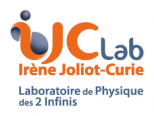As a researcher in the nuclear team of the IJCLab theory division, my work is dedicated to advancing the understanding of nuclear reactions through the use of ab initio methods. Our long-standing and internationally recognized collaboration focuses on modeling nuclear reactions from the most fundamental interaction between neutrons and protons. Over the past decade, we have been at the forefront of applying the ab initio paradigm to the field of nuclear reaction theory.
Our team has developed a unique computational approach that stands alone in its ability to describe channels involving binary and ternary reactions between nuclei totaling more than four nucleons. This is achieved by utilizing constituent protons and neutrons that interact through a nuclear interaction derived from chiral effective field theory (EFT). Our approach is unmatched in the field and reflects our team’s dedication to exploring the most fundamental aspects of nuclear reactions. By linking the properties of nuclei to the strong force via EFT, our approach has the potential to revolutionize the field.
In addition to my work in nuclear theory, I am particularly interested in interdisciplinary connections and emerging technologies such as ultra-cold gases of bosonic or fermionic atoms, machine learning technologies, and quantum computing. I am actively involved in exploring the use of generative neural networks to achieve the next leap forward in nuclear theory.
Collaboration with experimentalists is also an essential part of my work. I work closely with experimentalists at my laboratory and in international collaborations at CERN, PSI, or GANIL to support the interpretation and prediction of nuclear data. This is particularly important in the realm of nuclear astrophysics, where the explosion of new data gathered by space telescopes is revolutionizing our understanding of the universe. Understanding low-energy nuclear reactions is crucial for comprehending many of the signals, histories, and objects such as stars in the cosmos.
Overall, our team’s efforts are pushing the boundaries of nuclear theory and have the potential to shape the future of the field.
Research Topics
- Nuclear reactions and structure for Astrophysics and exotic nuclei in ab initio No-Core Shell Model with Continuum method
- Nuclear interaction from first principles using Effective Field Theory
- How to derive a modern mean-field from first principles ?
- Nuclei, an open quantum laboratory to study emergence of universality
Funding and support
| ANR JCJC Nectar | Our goal is to work out the annihilation properties of antiprotonic atoms up to the first halo nuclei starting from the interactions between nucleons and nucleon-antinucleon with ab initio methods. |
| Fellowship des 2 infinis | The aim of the thesis project is to develop the ab initio tools for studying the emission of 2p clusters, charged breakup and to participate to the modeling effort of beta-delayed particle emission. |







